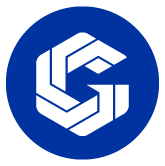

|
Not Found |
| Major: 5423
Catalog Year: 2023-2024
Effective Term: 2015 Fall
Last Admit Term: (Mor)
Award: CCL Total Credits: 34-66 CIP Code: 46.0502 |
Primary College:
Initiating College: Gateway Community College
Program Availability: Not Found
Program Availability: College-Specific (Mor)
Field of Interest: Not Found
Instructional Council: Occupational Administrators GPA: 2.00 |
|
SOC Code: 47-2152
| |
|
Program Prerequisites: None
|
|||||||||||
| Required Courses | |||||||||||
|---|---|---|---|---|---|---|---|---|---|---|---|
Students should select from thirty-four (34) to sixty-six (66) credits from the following courses based on their apprenticeship standing upon program enrollment and in consultation with Apprenticeship Program Coordinator: | Credits: 34-66 | ||||||||||
| Restricted Electives | |||
|---|---|---|---|
|
| Credits: | ||
| General Electives | |||
|---|---|---|---|
|
| Credits: | ||
| Program Competencies | |||
|---|---|---|---|
| 1. Analyze system design and operation of a refrigeration system. (FAC101, FAC101LL, PFT101, PFT101AA, PFT101AB, PFT101AD, PFT102, PFT102AA, PFT102AB, PFT102AC, IRW/PFT103, PFT103AA, PFT103AB, PFT103AC, PFT112)
2. Analyze system design and operation of an air conditioning system. (ELC/FAC/HVA105, ELC/FAC/HVA105LL, FAC/HVA210, PFT202) 3. Evaluate electronic devices specific to facilities maintenance. (ELC/FAC/HVA105, ELC/FAC/HVA105LL, PFT112) 4. Interpret wiring diagrams and analyze motor control electrical problems. (ELC/FAC/HVA115, ELC/FAC/HVA115LL) 5. Analyze electrical wiring design and operational malfunctions related to service and maintenance of refrigeration/air conditioning systems. (ELC/FAC/HVA115, ELC/FAC/HVA115LL, PFT202) 6. Analyze system design and operation of a hydronic heating and cooling system. (FAC/HVA210, FAC/HVA210LL) 7. Demonstrate pipe joining methods and describe their use in the field. (PFT102, PFT102AA, PFT102AB, PFT102AC, IRW/PFT103, PFT103AA, PFT103AB, PFT103AC) 8. Calculate heating and cooling loads based on the American Society of Heating, Refrigeration, and Air Conditioning Engineers (ASHRAE). (IRW/PFT103, PFT103AA, PFT103AB, PFT103AC) 9. Safely use hoists, hoisting equipment, and hoisting signals. (IRW/PFT103, PFT103AA, PFT103AB, PFT103AC) 10. Explain the impact of plumbing, mechanical, building, and electrical codes as it relates to job functions in the industrial field. (PFT112) 11. Demonstrate safe soldering and brazing techniques in all positions. (PFT112) 12. Describe special emergency procedures which apply to hazardous chemicals. (PFT112) 13. Review the types of refrigeration and air conditioning expansion devices and describe the functions and application of each. (PFT112) 14. Describe correct installation procedures for thermostatic expansion valves. (PFT112) 15. Arrange and install piping and piping materials in a refrigeration/air conditioning system. (PFT112) 16. Test, evacuate, and charge a refrigeration system. (PFT112) 17. Read, interpret, and draw diagrams, shop drawings, and related views used in the refrigeration trade. (PFT113, PFT113AA, PFT113AB, PFT113AC) 18. Create sections and isometric drawings for piping systems. (PFT113, PFT113AA, PFT113AB, PFT113AC) 19. Evaluate selected heating and cooling systems to determine proper air and water flow and maintain desired temperature and humidity. (PFT202) 20. Given maintenance problems common to solar heat systems, use manufacturer`s manuals to troubleshoot the problem. (PFT202) 21. Compare the construction and operation of steam and hot water boilers. (PFT205) 22. Given maintenance problems common to boilers, diagnose the problem and describe repair or replacement procedures required. (PFT205) 23. Demonstrate and describe procedures for boiler water testing and treatment. (PFT205) 24. Review the principles of combustion and methods of testing combustion efficiency and firing rates in oil and gas burners. (PFT205) 25. Describe the operation and function of difference pneumatic control devices. (PFT207) 26. Apply tools and procedures to installation and service problems on total pneumatic systems. (PFT207) 27. Perform routine compressor maintenance and repair including teardown, inspection, and start up. (PFT210) 28. Describe the typical instrumentation equipment employed in a facilities system and describe a systematic process for diagnosis and repair of service problems. (PFT213) 29. Discuss the importance of customer relations to a successful service operation. (PFT213) 30. Describe a systematic process for diagnosis and repair of service problems. (PFT213) 31. Demonstrate proper procedures for safe set up and use of oxy-acetylene torch and portable plasma cutting assemblies. (PFT104AA) | |||
|
+ indicates course has prerequisites and/or corequisites.
++ indicates that any suffixed course may be selected. MCCCD Governing Board Approval Date: December 10, 2013 | |||